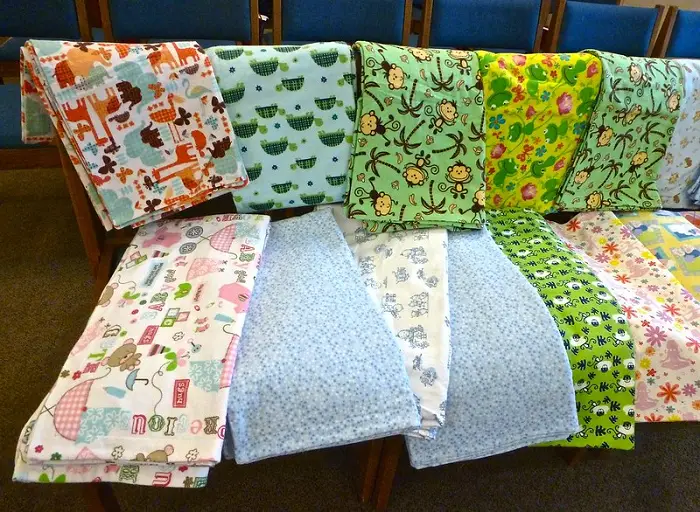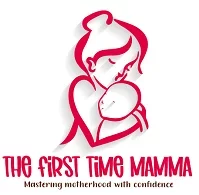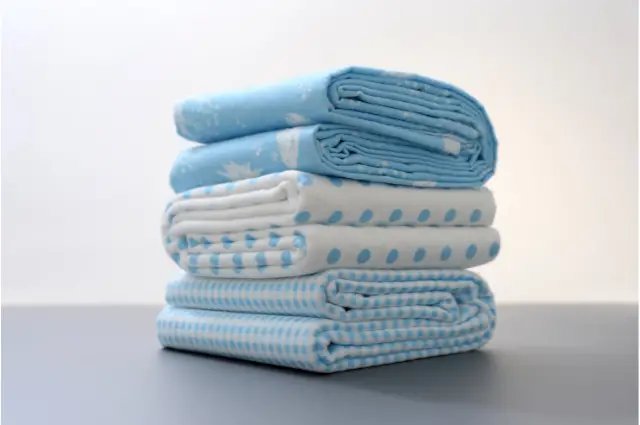Receiving blanket!
Hey! By the way… any links on this page that lead to products on Amazon are affiliate links and I earn a commission if you make a purchase. Thanks in advance – I really appreciate it! .
As a first time mom, I am sure you are wondering what it is.
Well, you are not alone.
When I first heard the word “receiving blanket”, it kind of brought several images to my mind. Is it the blanket they used in receiving newborns from birth? Is it the blanket used for covering the baby after a bath? I was somehow confused as a first time mom. Why did they have to call it receiving blanket? Calling it blanket would have made it clear to everyone since we use blankets at home.
In this article, I will tell you all you need to know about receiving blanket for babies.
Are you ready?
Let’s get started.
- What is a receiving blanket?
- Why is it called a receiving blanket?
- What is the size of a receiving blanket?
- What is a receiving blanket used for?
- How many receiving blankets do I need?
- Types of receiving blankets
- Best receiving blankets for newborn babies
- What to do with old receiving blankets?
- 5 Things to do with old receiving blankets
- Now you know all about a receiving blanket for babies
What is a receiving blanket?
A receiving blanket is the covering that parents use for different baby-related tasks such as swaddling babies. It is made from thin and soft material such as cotton, flannel or plush. It is warm on babies which makes them feel more secure as they were back in the womb.
Why is it called a receiving blanket?
It is called a receiving blanket because parents use it to wrap newborn babies immediately after they are born and before the baby is “receive” by the mom for the first time.
What is the size of a receiving blanket?
The average size of a receiving blanket is 28″ x 34″, while the standard size of a receiving blanket is “36 x 52”.
What is a receiving blanket used for?
Receiving blanket is one of the “can’t live without baby items”. Below are five uses of a receiving blanket.
1. To make baby warm
One thing you will learn about babies is that they get cold easily and you need to keep them warm. Wrapping a receiving blanket around your baby helps to keep them warm. The soft cotton blanket provides a baby with the heat to keep them warm, while the thinness of the blanket makes it easy for air to flow in and out to prevent the baby from overheating.
2. To use as a playmat
Receiving blankets are also useful as a play mat. They come in big sizes you can always lay on the floor for the baby to crawl, roll and play on. They can even sleep on it.
3. Use as a burping cloth
Although there are burping cloths for babies sold separately, a receiving blanket can also serve as a burp cloth because it is bigger and provides more coverage for the baby. Babies spit up a lot and you need lots of burp cloths when you have used up all of them, use receiving blankets as a replacement to keep your baby neat and clean.
4. Use as a changing mat
Receiving blankets can serve as a changing mat for babies. Use them to change your baby’s diaper when you are on the go or even at home. You don’t need to buy a travel changing mat – easily use your receiving blankets as a changing mat to provide cushions and comfort for the baby as you change them.
5. Use a receiving blanket to swaddle your baby
Receiving blanket is a good option to swaddling blankets. Fold it and use it as an everyday blanket to swaddle your baby.
How many receiving blankets do I need?
The truth is baby spits a lot. Especially if you have a “happy spitter” that seems to lose ounces of milk after each feeding. Also, you need at least 10 receiving blankets for different uses. For example, use 2 receiving blankets for each swaddling, 2 as playmats, 2 as changing mats, 2 as burping cloths and 2 to keep baby warm.
Types of receiving blankets
There are many types of receiving blanket for babies and they are:
1. Flannel receiving blankets
A flannel receiving blanket is made of soft flannel material.

Flannel receiving blankets are useful for swaddling, burping, as a stroller cover, etc. Check out beautiful flannel receiving blankets here.
2. Muslin receiving blankets
Muslin receiving blankets is bigger and softer than the flannel receiving blankets. They are made from 100% Muslin cotton fabric. The more you wash them, the softer they become. The cotton is breathable, so it prevents overheating. It produces enough warmth for babies during winter and it’s lightweight enough to use as a blanket also in summer.
Muslin receiving blankets are useful for nursing covers, pram covers, picnic baskets, light baskets, changing blankets, cleaning blankets, etc. Get more beautiful Muslin blankets here.
3. Pattern receiving blankets
Pattern receiving blankets are blankets with different patterns printed on them. Most are made from 100% Polyester and have lovely designs like the one below.
Pattern receiving blankets can be used as a sleeping mat for baby, cuddling a baby, stroller cover, nursing cover, burp cloth, etc. Find more adorable pattern receiving blankets here.
4. Organic receiving blankets
Organic receiving blankets are made from 100% high-quality organic cotton that is extra soft, snuggly and cozy for babies. It does not stretch nor wrinkle and is suitable for all climates or seasons. The cotton is also breathable and thick.
The organic cotton receiving blanket is perfect for cuddling, stroller cover, nursing cover, sleeping mat, etc. Find affordable organic receiving blankets here.
5. Hospital receiving blankets
Everyone loves hospital receiving blankets. They are 100% cotton and the first thing you wrap your baby with, in the hospital. Most hospitals have the customary white blankets with blue and pink stripes. They are 100% cotton and latex-free. They are big – 30 x 40 inches and very durable. Most parents take their newborn’s first pics in them. Most hospitals give them for free. If you need more, find affordable hospital receiving blankets here.
Best receiving blankets for newborn babies
Now, that you know the different types of receiving blankets, which one should you use?
I think from the list above; the organic receiving blanket score the highest mark. This is because it is extremely soft. It is made from 100% organic cotton. It is hypoallergenic, cozy and soft for babies.
What to do with old receiving blankets?
Many people use lots of receiving blankets for their newborn babies. The question is, what do you do with old receiving blankets when your child does not need it anymore?
Below are five things you can do with an old baby receiving blankets.
5 Things to do with old receiving blankets
- Make a quilt: Cut a receiving blanket into four squares and sow to make a quilt.
- Use them as cleaning cloths or wipes. Cut them into the size you want and sew the edges. Use them to clean baby messes such as spit-ups, food messes, etc
- Use as face wipes to cleanyour baby after eating
- Sew some of your receiving blankets together to make a beach blanket.
Receiving blankets vs swaddle
Receiving blankets for babies differs from a swaddle blankets. Many people mix them together. Here, you will learn the difference between the two so you will know which one is best for you.
Receiving blanket comes in smaller size and rectangular shapes while swaddle blankets are larger, lighter, and stretchy. Swaddling blankets have velcro and are shaped just to swaddle.
Swaddle blankets are used for varieties of uses such as a nursing cover and a car seat cover. Receiving blankets because of the size can serve as a burp cloth.
Receiving blanket vs burp cloth
When it comes to baby care, a receiving blanket and a burp cloth have various purposes. A receiving blanket is often bigger and comprised of plush, cotton, or flannel-like fabrics. It also offers more coverage and versatility due to its larger size. On the other hand, a burp cloth is made expressly to shield the caregiver’s clothing from spit-up, drool, or milk before, during, and after feedings. Burp cloths and receiving blankets are both necessary for your little one, yet they each have a different purpose.
Receiving Blanket vs Muslin
A receiving blanket, as mentioned earlier, is typically made from soft materials like cotton, flannel, or plush. It is known for its warmth and capacity to make the newborn feel comfortable. Muslin is a loosely woven, lightweight cotton fabric that is used to make muslin blankets. They are known for being flexible and velvety. Compared to receiving blankets, muslin blankets are larger. While muslin blankets are liked for their breathability and adaptability in different environments, receiving blankets are frequently picked for their warmth and multipurpose use.
Now you know all about a receiving blanket for babies
Taking care of babies is hard work. There’s no doubt about that.
A receiving blanket has so many advantages that you cannot ignore.
Get as much as you can. You will surely need them.





